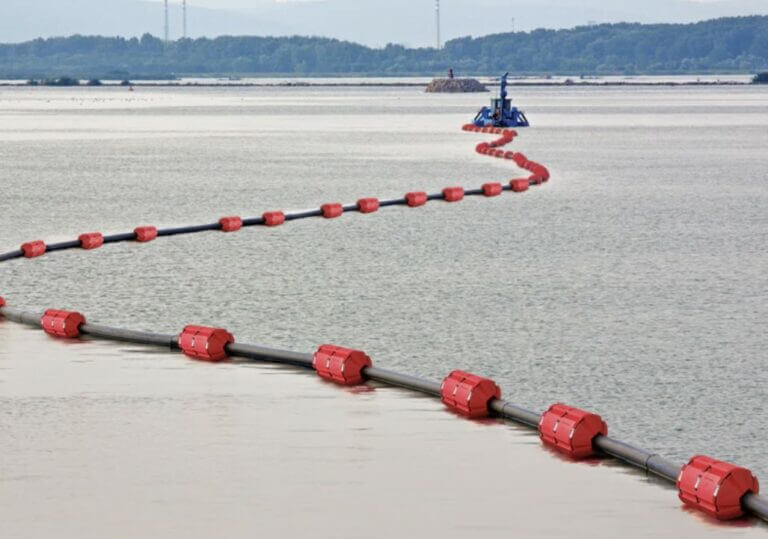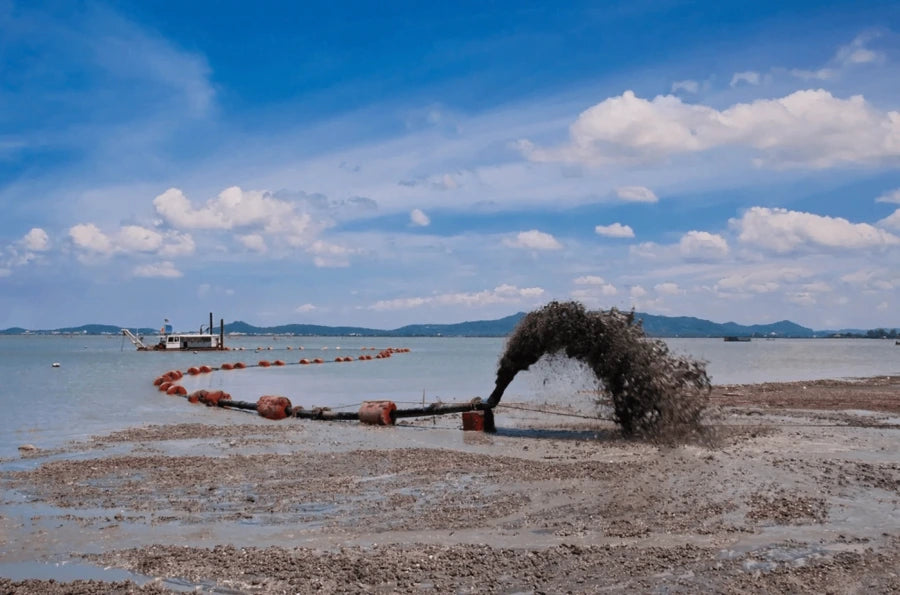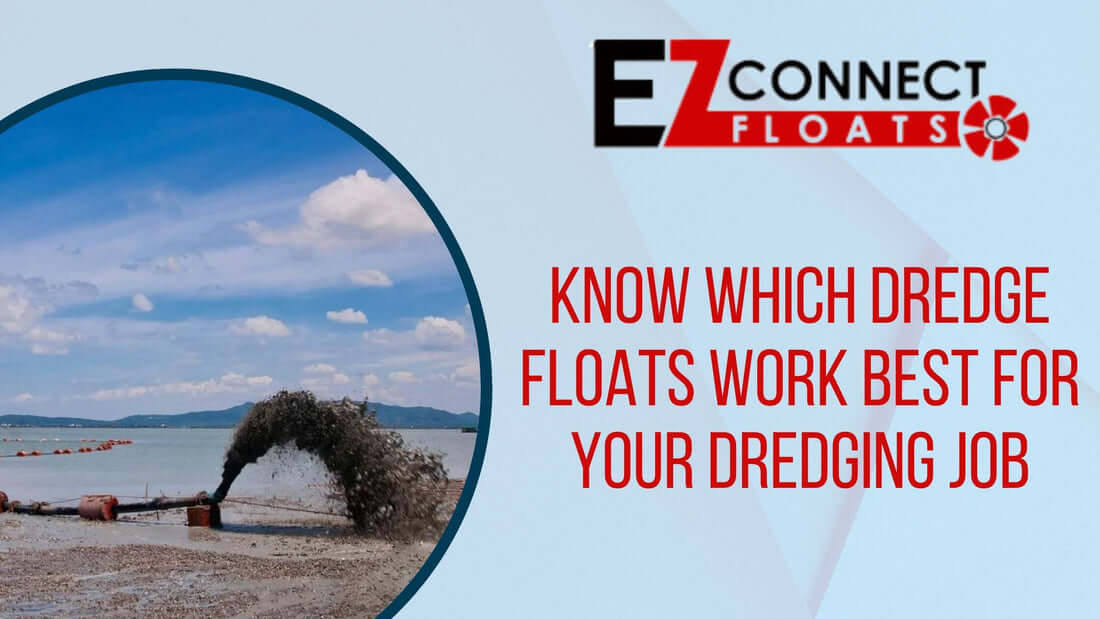
Choosing the Right Floats for Optimal Dredging Performance
Caption: Floats are indispensable for dredging
Dredging is an important process used to clean and maintain waterways like rivers and harbors. Keeping harbours clean is essential since pollution and other toxic activity can be controlled.
Dredging helps all such ecosystems through the removal of sludge, trash, dead vegetation, debris, and other unnecessary items. It also combats eutrophication which is a scenario where there are excessive nutrients in the water owing to runoff.
Dredge floats are essential in this process, as they support and protect the hoses used to transport the dredged material. Diverse kinds of floating and dredging equipment are available for dredging applications. Get in touch with EZ Connect Floats for finding the perfect hose floats for your dredging job.
How do hose floats help in the dredging process?
Caption: Hose floats are immensely helpful for dredging
Hose floats, or dredge pipe floats, are specially designed devices that attach to the dredge pipeline at regular intervals. They are used to keep the pipeline afloat and buoyant. The pipeline is the key structure transporting the material that is being dredged.
Hose floats also maintain the pipeline in a proper position. They prevent it from getting trapped due to underwater hurdles and sinking altogether. At the time of dredging, the materials are neatly pumped through the pipe float. They go from the site to the location for the deposition of materials. The pipeline floats are connected at regular intervals to the pipeline keeping it afloat on the surface of the water.
This enables the dredge pump to function more efficiently, while also combating possible damages due to being submerged in water.
Hose floats types, their comparison, and applications
Caption – Pipeline floats used in dredging operation
With various types of dredging hose floats available in the market, choosing the right one becomes crucial for efficient and safe operations.
Common types of dredge floats
- Solid foam hose floats: Solid foam hose floats are commonly used in dredging due to their buoyancy and durability. These floats are usually made of closed-cell foam. It allows them to float on the water surface. The closed-cell structure ensures that the foam remains buoyant even if the outer layer gets damaged.
- Pipe-through hose floats: Pipe-through hose floats are another type commonly employed in dredging. They have a hole or pipe in the middle that allows the hose to pass through. They are typically made of sturdy plastic or polyethene material and provide good buoyancy and strength.
- Modular hose floats: Modular hose floats offer versatility and customization options. They consist of multiple sections or modules that can be interconnected. This enables the creation of a float of a desired length. These floats are typically made of lightweight and corrosion-resistant high-density polyethene (HDPE) material. The modular design allows for easy installation and adjustment.
- Spherical hose floats: Spherical hose floats have a distinctive ball-like shape. They are typically made of durable plastic or foam materials. These floats provide good buoyancy and are easy to attach to the hoses. In rough water conditions, the compact shape of spherical floats may not offer as much stability. So they are more suitable for shallow water areas.
When choosing the material for hose floats or dredge pipe floats, it is essential to consider factors such as durability, resistance to chemicals and UV radiation, and ease of maintenance. Common materials used for dredge floats include high-density polyethene (HDPE), polyurethane, and various types of foam.
Applications
Dredge floats find extensive applications in floating and dredging equipment across various industries. These include –
- Dredging and marine construction projects
- Offshore oil and gas operations
- Waterway maintenance and river dredging
- Underwater pipeline installations
- Environmental remediation and pollution control efforts
- Aquaculture and fish farming operations
- Emergency response and disaster recovery scenarios
Why choose EZ Connect Floats?
EZ Connect Floats have a reputation for time-tested excellence
When it comes to selecting hose floats for your dredging applications, you’ll find that EZ Connect Floats stand out as an excellent choice. EZ Connect Floats offer a range of dredge floats that are easy to install, versatile, and highly durable.
By choosing EZ Connect Floats, you can ensure that your dredge pipeline has efficient and reliable buoyancy and stability, ultimately contributing to the success of your dredging operations.
Key takeaways
Choosing the right dredge float is essential for ensuring efficient and safe operations in floating and dredging equipment. By understanding the different types of dredge floats and exploring their applications, professionals can make informed decisions. Your pipe diameter, application requirements and environmental conditions determine your final choice. Now the question is, where do you find the best hose floats?
Be sure to partner only with reliable suppliers such as EZ Connect Floats. Our dredge pipe floats are highly durable and weather-resistant.
You can get in touch with us to learn more about choosing the right floats for dredging and other needs.
Frequently asked questions (FAQs) on the type of hose floats for dredging
1. What are the main considerations before selecting hose floats for dredging applications?
When choosing hose floats for dredging, factors such as buoyancy requirements, pipe diameter, durability, material compatibility, and ease of installation should be considered. Assessing these aspects will help determine the most suitable type of hose floats for your dredging needs.
2. Are there specific weight limits that hose floats can support?
Yes, hose floats have weight limits that vary depending on their design and construction. It is crucial to consult the manufacturer’s specifications when choosing hose floats. This ensures that the chosen floats can support the weight of the dredge pipeline. Additionally, hose floats should be able to handle any additional loads imposed during operation.
3. What are the options for securing hose floats to the dredge pipeline?
Hose floats can be secured to the dredge pipeline using various methods, including straps and rachets, clamps, or rope. The specific attachment mechanism may vary depending on the float design and the diameter of the pipeline. It is essential to ensure a secure connection to prevent float detachment during dredging operations.
4. Can hose floats be customized to fit specific project requirements?
Yes, some manufacturers offer customization options for hose floats to cater to specific project needs. Customization may include modifications in size, shape, color, or even the addition of company logos. Consulting with the manufacturer or supplier can help determine the feasibility and available customization options.
5. Are hose floats reusable for multiple dredging projects?
Yes, hose floats are typically designed to be reusable for multiple dredging projects. Their durable construction and resistance to harsh conditions allow for repeated use. Dredge floats provide long-term cost savings and convenience. Proper maintenance and periodic inspections can help ensure the longevity and performance of hose floats throughout multiple projects.
Have Questions?
Get in touch with us now!
Related Blogs
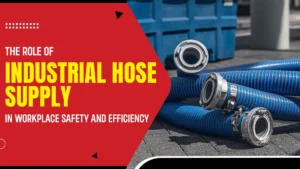
The Role of Industrial Hose Supply in Workplace Safety and Efficiency
In high-stakes industries such as oil and gas, mining, manufacturing, dredging, and defense, industrial hoses serve as vital connectors in daily operations. Whether transferring hazardous
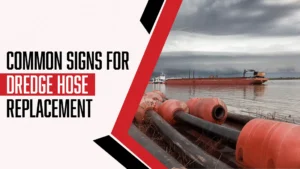
Common Signs For Dredge Hose Replacement
Dredge hose is an essential component in mining, oil and gas, and heavy industries, where it is used to transport materials such as sediment, slurry,

The Role of Automation and AI in Next-Generation Dredging Technology
Dredging technology has undergone a quiet but powerful transformation over the past decade. A purely mechanical process, which included heavy machinery, manual supervision, and reactive

